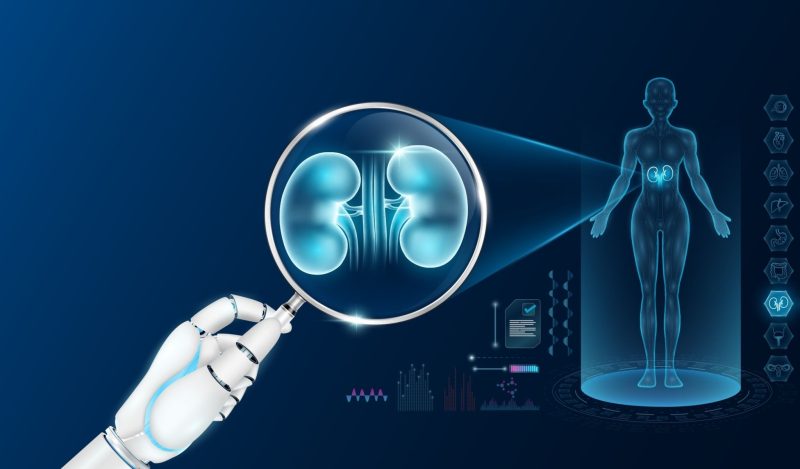Increased exposure to toxic substances due to an overuse of ineffective measures like mask mandates, frequent use of hand sanitizers, disinfectant sprays, and frequent testing during the pandemic will have a short- and long-term impact on children’s health and future generations.
Moreover, ineffective lockdowns increased the number of children relying on food bank packages which cannot fulfill the daily nutrition needed during growth and development, worsening the threat for poor health during aging.
An overall dis-regulation of the immune system might occur with consequences ranging from autoimmune disorders to cancer. It is most likely that the most affected population will be the poor, immunocompromised, and disabled children. To prevent any further damage measures should be stopped while urgent analysis on poisoning and possible ways to repair the immune system is needed.
Toxic chemicals a known risk for future health
The World Health Organization states that poisoning is one of the top five causes of death from unintentional injuries in children. Surveys from China show that poisoning is one of the leading causes of death in Chinese children, ranking as high as the 3rd cause of accidental death.
Hundreds of new chemicals are developed and released in the environment every year, untested for their toxic effects on children. Over the past 50 years more than 100.000 synthetic organic chemical compounds have been released. For the vast majority of these chemicals for everyday domestic and commercial use, there is only a limited understanding of how they will behave once released into air, water and soil.
As a result a cocktail of global toxicants such as chlorinated, brominated and fluorinated proteins and Ag, Al, Ars, Hg and Pb is found in human and animal blood samples. Hormone-like synthetic compounds like PFAS and PCB, the so-called endocrine disrupters are taking a heavy toll on humans and wildlife, interfering with organisms’ natural chemical signaling pathways as described in the book Our Stolen Future: Are We Threatening Our Fertility, Intelligence and Survival? by Colborn et al. Certain pesticides appear to interfere with brain development, aging and reproductive function.
Children’s exposures to toxic chemicals in the environment cause or contribute to a group of chronic disabling and sometimes life-threatening conditions like childhood cancer, neurodevelopmental, behavioral and fat metabolism disorders. Diseases that increased substantially in the Western world and cannot be explained by parallel trends in lifestyle, diet and behavioral patterns.
There is growing scientific evidence that even low doses of exposure to toxic substances during fetal and child development can cause lasting permanent effects. Critical windows of vulnerability to exposure are the developing fetus during the third trimester of pregnancy when the brain is developing most rapidly and during the first several years of life when the immune system is programmed.
The past two years, the biological hazard has increased with a mountain of extra waste, nonessential personal protective equipment making up nearly half of the volume of waste. About 1/3 of personal protective equipment cannot be safely bagged or stored because of too few biohazard bags. Worldwide, billions of euros have been spent on faulty masks and other PPE mostly derived from Chinese companies which did not exist before the pandemic. Although WHO released an emergency about the danger of air pollution resulting in a poor immune system, more infectious diseases and more chronic noncommunicable diseases (i.e. heart diseases, diabetes, obesity), a risk benefit assessment for the pandemic measures destroying millions of people’s lives has not been made.
Pregnant women, children and adolescents are more susceptible to intoxications
The US National Academy of Sciences (NAS) has estimated that the toxic exposures in the environment contribute to the causation of 28 percent of neurobehavioral disorders in children.
The NAS report and numerous research have learned that “the time makes the poison” with the corollary that “in early development, timing makes the poison.”
The threshold, the lowest concentration that might produce harmful effects, is different for every chemical and may differ from person to person (sensitivity). The longer the exposure to a chemical the more likely one is to be affected by it. Chemical exposure, which continues over a long period of time, is often particularly hazardous because some chemicals can accumulate in the body or because the damage does not have a chance to be repaired.
The body has several systems, most importantly the liver kidney and lungs that change chemicals in less toxic form and eliminate them. The common points that substances first contact the body are the skin, eyes, nose, throat and lungs. The ability of children to metabolize, detoxify and excrete many toxicants differs from that of adults. They are less able to deal with chemical toxins because they do not have the enzymes necessary to metabolize them and thus are more vulnerable to them.
The developing systems of a child are very delicate and are not able to repair damage that may be caused by environmental toxicants. Even in the absence of clinical visible symptoms, a subclinical toxicity could cause diseases in intelligence and alteration of behavior. The internal organs mostly affected are the liver, kidneys, heart, nervous system (including the brain) and the reproductive system.
There are a few substances that once deposited remain in the body forever like asbestos fibers. Toxic chemicals can cause genetic damage. Most chemicals that cause cancer also cause mutations. For several chemical metals epigenetic modifications are considered a possible mechanism underlying the toxicity and cell-transforming ability. Unfortunately, most chemicals have not been tested at all.
Moreover, interaction between substances that can produce any synergistic or potentiating effect are not known. In 1997 a White House task force on children’s health and safety was established and in 2002 the Best Pharmaceuticals for Children’s Act became law, which required that drugs labeled for use in children undergo scientific studies to specifically examine children’s susceptibilities. Although regulations for a precautionary approach to use toxic chemicals have been set up their ambition have not met their accomplishment.
How Covid measures put children’s future health at risk
Many studies showed that children and adolescents are at a very low risk for developing a severe case of Covid-19. Collective studies show that the immune response of adults and children to mild SARS-CoV-2 infection are similar but diverge after the development of severe disease in ARDS (adults) and MIS-C (children) characterized by a difference in immune response and inflammation.
However, the association of severe Covid-19 in children and adults with preexisting medical conditions underscores the contribution of these comorbidities to disease severity. Several studies demonstrated a relation between gut microbiota composition, levels of cytokines and inflammatory markers, chemokines and blood markers of tissue damage in patients with Covid-19 and the severity of disease. A depletion of gut microbiota with immunomodulatory potential was observed. It can be that the microbial dysbiosis after disease resolution could contribute to persistent symptoms described as Long Covid.
There is no proof that measures during the pandemic for healthy children and adolescents protect against viral infection or transmission,while the possible harm by a combination of toxic substances that could eventually work synergistically or potentiating in possible harm on the effectiveness of the immune system is of increasing concern.
The more we can imagine that children’s exposure to toxic substances like titanium dioxide, graphene oxide, Ag, sodium azide, ethanol, methanol, polypropylene fibers often in combination and for longer periods of time together with a possible change in carbon dioxide concentration can cause an alteration in their gut microbiota and an overuse of their detoxification systems in liver, kidney, lungs and heart.
An alteration of the gut microbiota of the children and adolescents predispose children and adolescents to develop MIS-C and other chronic diseases. Case reports of serious health problems within minutes while wearing a mask have been published. Remarkably experts to the government, politics and courts are still advising pro-measures, even when the science is clear about the ineffectiveness and safety cannot be guaranteed.
Recently, the Belgian Sciensano found the estimated titanium dioxide mass in 24 different single and reusable types of facemasks meant for the general public systemically exceeded the acceptable exposure level by inhalation when masks are worn intensively. Part of this study was published in Nature. However, Sciensano did not retract any of the tested masks from the market or reported to the public in which type of masks the high level of titanium dioxide was found while in the paper it is stated a health risk can not be excluded.
Moreover, uncertainties regarding the genotoxicity of titanium dioxide particles remain. Additionally, Sciensano said It does not exclude titanium dioxide from being present in other types of masks containing synthetic fibers such as medical masks even when they are certified either. Key information on risk assessment for toxicity is missing. In general, scientific data on the presence of (nano) particles in face masks their characteristics, the exposure and the risks for the population is limited, especially for vulnerable populations, elderly, pregnant women and children. The past two years these groups were forced to wear face masks intensively without a decent risk-benefit assessment.
According to the ECHA, titanium dioxide is on the EEA market in nanomaterial form. The substance is approved by the European Union and suspected of causing cancer. On February 2022 the Belgian government published that titanium dioxide E171 will no longer be allowed for food consumption from August 2022 onwards. Sciensano is also working on an Agmask project, though results have not become available for the public yet. The ECHA states that the presence of Ag is very toxic to aquatic life with long lasting effects.
In Germany, The Netherlands and Canada millions of masks have been retracted from the market due to the presence of graphene-oxide known in ECHA as a substance causing eye irritation, skin irritation and may cause respiratory irritation. In a review on graphene nanoparticles the underlying toxicity has been revealed, for instance physical destruction, oxidative stress, DNA damage, Inflammatory response, apoptosis, autophagy and necrosis.
The potential hazards for the long term are still unknown. Unfortunately, the uncontrolled frequent use of biocides by producers of face masks and tests stretches the already existing problem of antibiotic resistance ,like MRSA (multi resistant Staphylococcus aureus), even further. In this respect it is important to realize that a bacterial overgrowth with skin problems due to mask wearing is often caused by Staphylococcus aureus. Also, the University of Florida found 11 pathogenic bacteria that can cause diphtheria, pneumonia and meningitis on the outside of masks worn by children.
Crosstalk between poison, gut microbiota, inflammation and vaccine response
The influence of pollutants on the gut microbiota, gut permeability and the immune system, enhancing pulmonary, intestinal and systemic inflammation is undeniable. Conditions that can enhance inflammatory effects with systemic consequences. Pollution can influence epigenetic modifications, oxidative stress and impact processes of methylation of genes both in loss and excess particularly for those involved in inflammatory pathways.
Overall, there seems to be a risk for the development of certain autoimmune diseases as a result of an imbalance of T cell subsets. The underlying mechanisms and long-term consequences are not yet completely clear; thus the effects might be even more serious than expected.
In some cases a synergistic effect can take place between a pathogen and pollutant resulting in an altered immune response. Microbiota act as an immunomodulator and are involved in the response to vaccination. Different types of microbiota inhibited by PFAS are linked to a better immune response to vaccination and longevity.
Exposure to PFAS has been associated with a decrease in the humoral immune responses to tetanus, diphtheria and rubella vaccines in children and adults. On the other hand a cross sectional study in China showed a protective effect of the influenza vaccine on the effects of air pollution. As known for many decades the efficacy of vaccines depends on the integrity of the immune system. Humans are exposed to hazards throughout their lifespan and the effects of these exposures are often not realized until decades later.
In fact, individuals conceived during the Dutch Hunger Winter at the end of World War II were shown 60 years later to have altered DNA methylation at a locus which plays an important role in growth. Recently a genome-wide epidemiology study of BPA exposure and DNA methylation levels in pre-adolescent girls in Egypt showed that methylation profiles exhibit exposure dependent trends.
Developmental BPA exposure may both be associated with higher body weight and increased obesity or with hyperactive lean phenotypes. A possible link of pesticide exposure of farm workers to various and deadly illnesses like Parkinson’s and blood cancers took a decade for a group of French scientists to blow the whistle until it was recognized. Environmental, behavioral, socioeconomic and diet contribute to different risk profiles for later in life diseases. Results may be dependent on vulnerable stages of life that represent critical windows of susceptibility.
Preventing latent disease development for later in life diseases
The signals are clear enough to start questioning and searching for the truth. A recent article in the Daily Mail in the UK stated Long Covid might not actually blame fatigue in children, as symptoms are just as common in youngsters who never had the virus. American children are losing motivation and creativity, teachers say. Problems include depression, underachievement, disconnection and anxiety.
A recent English study showed in schoolchildren a 23 percent loss of early learning, a decrease in concentration and verbal and nonverbal communication. Another article observed a pandemic brain: neuroinflammation in non-infected individuals during the Covid-19 pandemic. An increase in the prevalence of fatigue, brain fog, depression and other sickness behavior like symptoms that implicate a possible dysregulation in neuroimmune mechanisms. Latest research demonstrated the increased risk for myocarditis and pericarditis in adolescents after vaccination. The authors advised a personal risk-benefit assessment before vaccination. A Lancet study reported a rare multisystem inflammatory syndrome in vaccinated young.
Although it is yet unclear what would have been the trigger for the inflammation and the overdrive over the body’s immune system, fatigue, loss of strength and interest, a possible synergistic or potentiating effect of the presence of high concentrations of various toxic substances cannot be excluded. A new stage of thinking is needed and retooling the risk assessment process of Covid measures so that it takes into account the increased vulnerability of pregnant women and children to toxic substances.
Governmental and other organizations who analyzed the presence of toxic substances in face masks, tests, gloves and other PPE urgently need to release their available data and analysis to open the discussion on possible harm of children during pandemic measures. A new article clearly demonstrated that wearing masks at school does not prevent viral transmission. Though poor evidence for masking the public and children has been known for a while. Child abuse by forcing children to wear masks, even from the age of two years, should be stopped immediately to prevent loss of quality of life, loss of well-being and a loss of the ability to work while aging.
Furthermore, groups of children of all ages who have been exposed to extended periods of mask wearing, overuse of hand sanitizers, disinfectant spray and frequent testing need to be analyzed on the presence of toxic substances or metabolites in the body.
We need a program to detoxify and restore the immune system and a healthy life with adequate nutrition. This is what is required to return a stolen future to the young to live a life in freedom, connection, creativity, and motivation in balance with nature.
Abbreviations used
ARDS: Acture Respiratory Distress Syndrome
MIS-C: Multisystem Inflammation Syndrome
PFAS: Per and Polyfluoroalkyl Substances
PCB: Plychlorobifenyl
PBA: PolyBisphenol A
PPE: Personal Protective Equipment
Pb: Lead
Ag: Silver
Ars: Arsenic
Al: Alum
Hg: Mercury
Published under a Creative Commons Attribution 4.0 International License
For reprints, please set the canonical link back to the original Brownstone Institute Article and Author.









